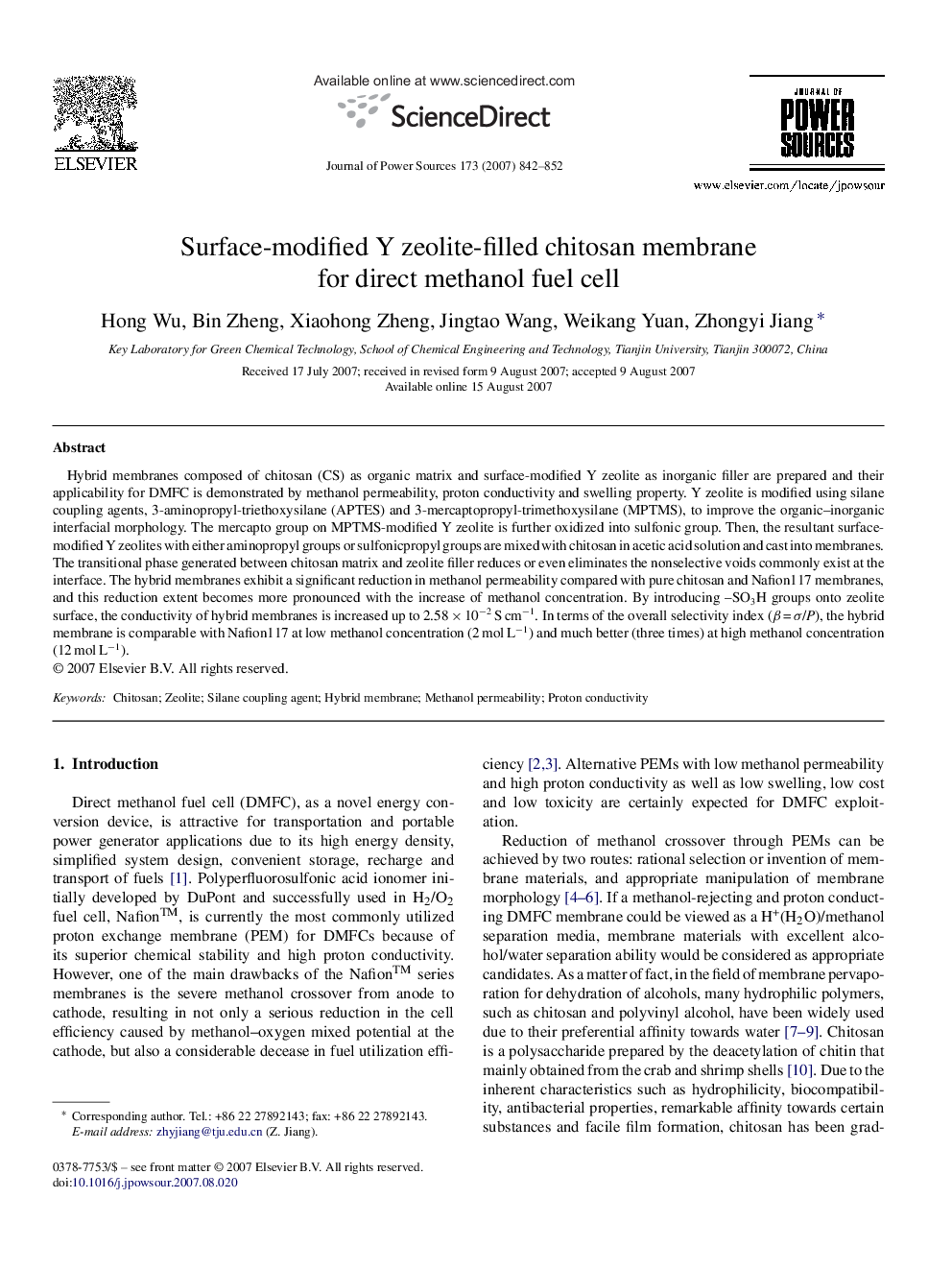| Article ID | Journal | Published Year | Pages | File Type |
|---|---|---|---|---|
| 1291014 | Journal of Power Sources | 2007 | 11 Pages |
Hybrid membranes composed of chitosan (CS) as organic matrix and surface-modified Y zeolite as inorganic filler are prepared and their applicability for DMFC is demonstrated by methanol permeability, proton conductivity and swelling property. Y zeolite is modified using silane coupling agents, 3-aminopropyl-triethoxysilane (APTES) and 3-mercaptopropyl-trimethoxysilane (MPTMS), to improve the organic–inorganic interfacial morphology. The mercapto group on MPTMS-modified Y zeolite is further oxidized into sulfonic group. Then, the resultant surface-modified Y zeolites with either aminopropyl groups or sulfonicpropyl groups are mixed with chitosan in acetic acid solution and cast into membranes. The transitional phase generated between chitosan matrix and zeolite filler reduces or even eliminates the nonselective voids commonly exist at the interface. The hybrid membranes exhibit a significant reduction in methanol permeability compared with pure chitosan and Nafion117 membranes, and this reduction extent becomes more pronounced with the increase of methanol concentration. By introducing –SO3H groups onto zeolite surface, the conductivity of hybrid membranes is increased up to 2.58 × 10−2 S cm−1. In terms of the overall selectivity index (β = σ/P), the hybrid membrane is comparable with Nafion117 at low methanol concentration (2 mol L−1) and much better (three times) at high methanol concentration (12 mol L−1).
